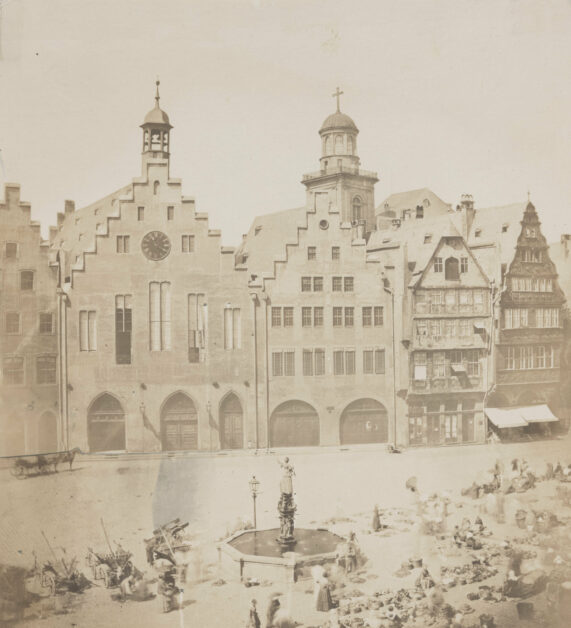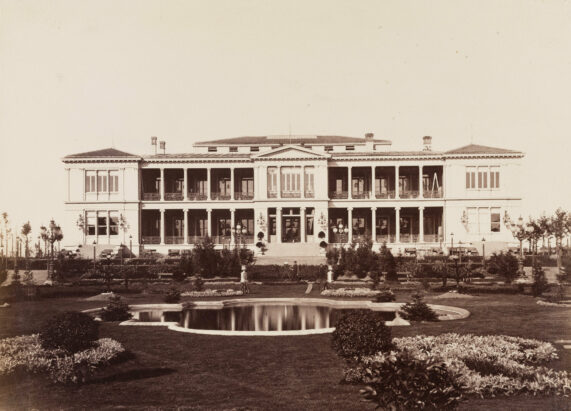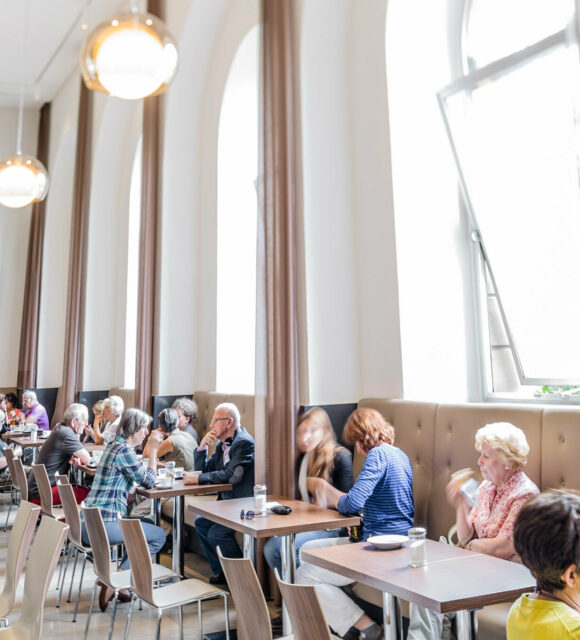
His photographs are a journey through time. Carl Friedrich Mylius (1827–1916) shaped the image of Frankfurt like no other photographer. From the Zeil, the Eschenheimer Turm, the Goethe Monument and the Römer to the banks of the Main, he captured the city’s most well-known sights. In doing so, he became a pioneer of architectural photography more than 150 years ago. The Städel Museum is devoting the first major solo exhibition to Carl Friedrich Mylius, featuring some eighty works.
About the Exhibition
The photographs of Carl Friedrich Mylius, a native of Frankfurt, are artistically outstanding works and at the same time important documents of the city’s history: in the 19th century, Frankfurt was an important destination for travellers as a historic site of imperial coronations, as a trade fair city and because of its geographical location near the Middle Rhine. With the rise of tourism, Mylius’s photographs of famous sights became popular souvenirs. Many of his views show a city in transition. At the time, Frankfurt was undergoing not only a political reorganization as a result of Prussian annexation, but also rapid economic and social development. Industrialization and urbanization led to drastic structural changes—entire streets in the old town and inner city disappeared. As a chronicler of his time, Mylius documented the historical sites of his city as well as the new buildings, industrial plants and modern infrastructure.
He was also drawn to Frankfurt’s surroundings—the Feldberg in the Taunus, the towns of Kronberg, Königstein and Gelnhausen—and he left behind the first surviving photographs of some of these places. One of the highlights of the exhibition is a 7.6-metre-long panorama of the Main, one of the oldest known examples of early German photography. In 1860 and 1861, Mylius photographed both banks of the river in thirty-one separate shots. As a photographer he was a neutral observer who captured his subjects objectively and impartially. At the same time, he used stylistic devices such as central perspective and balanced composition, demonstrating his keen sense of design. Even in these early days, photography was more than mere illustration—it was a means of capturing the city in an aesthetic dimension.
Curator
Dr Kristina Lemke (Head of Photography, Städel Museum)
With support from
Dr Brigitte Sahler
Sponsors & Patrons
Sponsored by
Dr. Marschner Stiftung
With additional support from
Ina Petzschke-Lauermann
Cultural Partner
hr2-kultur





















